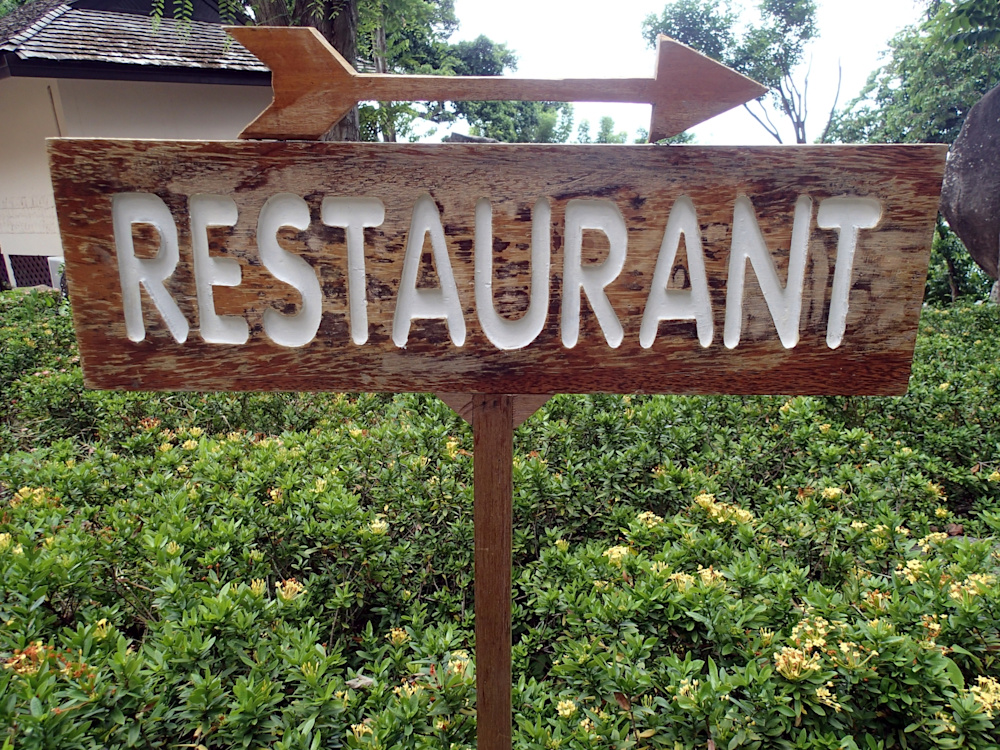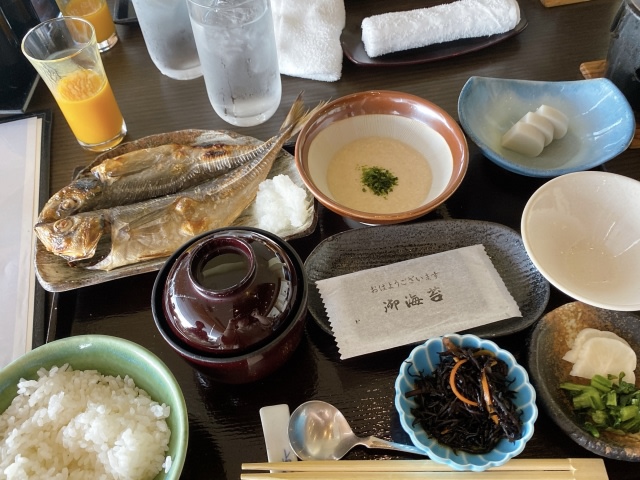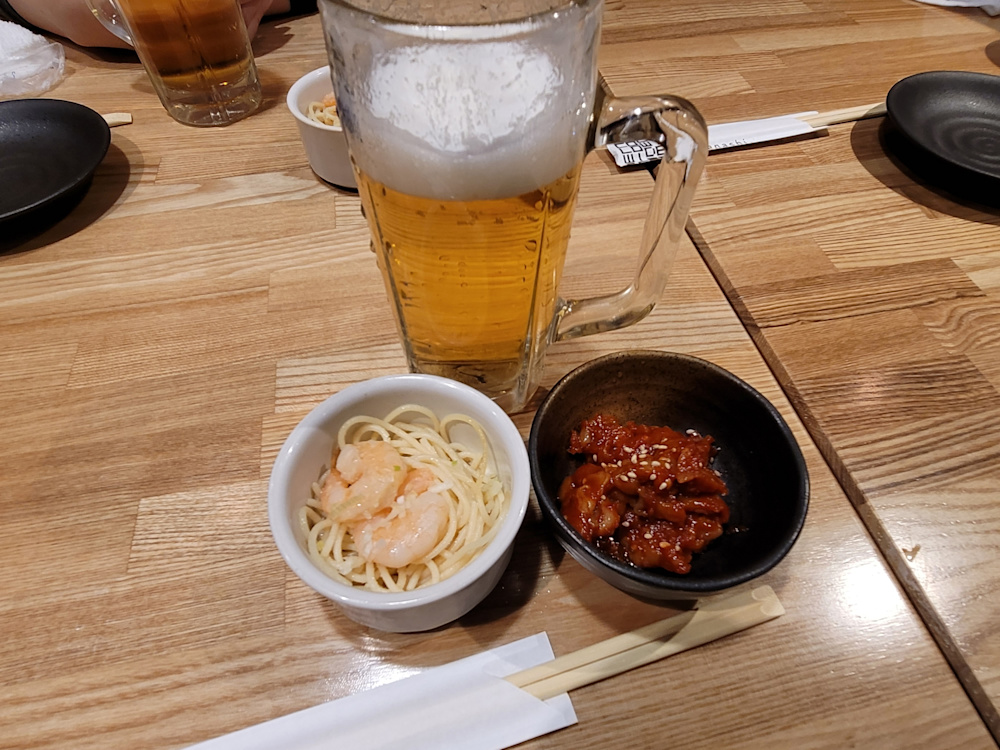Updated October 27, 2025
Types of Restaurants in Japan: Here's What to Expect
If you're new to Japan, eating out can seem complicated. Restaurant types, ordering systems, and dining customs are often different from what you're used to at home.
Most people know about sushi restaurants and ramen shops, but Japan offers much more. You'll find family-style restaurants, grilled meat specialists, traditional multi-course dining, and countless other options.
Understanding these different restaurant types will make your dining experiences in Japan much easier and more enjoyable.
In this guide, we’ll break down everything you need to know about the different types of restaurants in Japan, from how to order to how to pay the bill.
In this article: 📝
Traditional Type of Japanese Restaurant: Fine Dining at Kappo and Ryotei
If you want to experience traditional Japanese cuisine at its finest, kappo and ryotei restaurants represent the pinnacle of culinary artistry. While both offer exceptional dining, they cater to different atmospheres and occasions.
Kappo Cuisine
Kappo restaurants offer a more approachable way to experience high-quality traditional Japanese cooking. The word “kappo” combines the characters for “cutting” and “cooking,” reflecting the chef’s hands-on preparation style.
These restaurants typically feature counter seating where diners can watch chefs prepare dishes right in front of them, which creates an intimate and engaging atmosphere.
What makes kappo special is its accessibility compared to more exclusive dining options. While maintaining high standards for ingredients and preparation, kappo restaurants serve a broader range of guests.
You’ll find everything from neighborhood spots to more upscale establishments, but all share that characteristic counter-focused layout where the chef’s skill becomes part of the entertainment.
Ryotei Dining
Ryotei restaurants represent the most formal style of traditional Japanese dining.
These establishments almost always require reservations and typically serve multi-course meals in private rooms with dedicated staff. The experience is elevated and refined, making ryotei popular for business dinners and special occasions.
Historically, some ryotei were so exclusive they wouldn’t accept first-time visitors without a referral from a regular patron. While many have relaxed this requirement to welcome tourists, ryotei remain pricier than most other restaurant types.
The private room setting and the possibility of inviting geisha or maiko entertainers contribute to the premium experience.
Everyday Dining: Teishoku Restaurants
For a taste of what Japanese people eat regularly, teishoku restaurants are your best bet. The term “teishoku” translates to “set meal,” and these restaurants specialize in balanced, home-style Japanese meals that won’t break the bank.
A traditional teishoku typically includes a main dish, a bowl of rice, miso soup, pickled vegetables called tsukemono, and one or two side dishes. This format reflects the Japanese concept of “ichiju-sansai” (one soup, three dishes), which emphasizes nutritional balance and variety.
The main dish might be grilled fish, fried chicken, pork cutlet, or any number of other proteins prepared in classic Japanese styles.
What makes teishoku restaurants especially convenient is that everything arrives at your table at once. Popular chains like Yayoiken have locations throughout Japan, but you’ll also find countless independent teishoku-ya serving their own versions of these comforting set meals.
Prices typically range from 600 to 1,500 yen, making teishoku one of the most economical ways to enjoy a full, fancy Japanese meal.
Casual Family Dining: Shokudo and Famiresu
Japan has two categories of casual restaurants that are perfect for relaxed dining with friends or family.
Shokudo
Shokudo, which literally means “dining hall,” refers to small, often family-run eateries serving simple, homestyle Japanese food.
These neighborhood spots are beloved for their unpretentious atmosphere and comforting dishes. At any Shokudo, you might find classics such as omurice (omelet rice), Japanese curry, teishoku sets, and various types of Japanese noodles on the menu.
These restaurants typically focus on traditional Japanese offerings rather than Western-style food, and they often stay open from morning until evening.

Famiresu (Family Restaurants)
Famiresu, short for “family restaurant,” are casual chain restaurants that serve a mix of Japanese and Western dishes.
Think of them as Japan’s answer to Denny’s or Applebee’s, but with more variety and often higher quality. Popular chains include Gusto, Saizeriya, Jonathan’s, and Royal Host.
These restaurants are incredibly family-friendly, with illustrated menus (sometimes in multiple languages), affordable prices ranging from 500 to 2,000 yen per person, and amenities like drink bars where you can enjoy unlimited soft drinks for a small additional fee.
Many famiresu are open 24 hours, making them convenient for late-night meals or early breakfast.
Pub-Style Dining: Izakaya
If you want to experience Japanese drinking culture firsthand, izakaya are where it happens. These Japanese-style pubs serve small plates alongside alcoholic beverages, creating a lively, social atmosphere perfect for after-work gatherings or intimate nights out with friends.
Izakaya menus are usually impressively diverse, ranging from yakitori (grilled chicken skewers) and karaage (fried chicken) to sashimi, salads, and Japanese chain restaurant favorites. The food is designed to complement drinks and is served in shared plates, encouraging group socializing.
Understanding Otoshi (Table Charge)
One aspect of izakaya that surprises many first-time visitors is the otoshi, also called tsukidashi. When you sit down, the staff will bring you a small appetizer you didn’t order, and yes, you will be charged for it. This typically costs 300-700 yen per person.
Think of otoshi as Japan’s version of a table charge or cover charge. Since tipping isn’t common in Japan, this fee helps compensate for the table service and allows customers to sit for extended periods without pressure to keep ordering.
The dish itself varies by restaurant and often changes daily, giving you a chance to try something you might not have ordered yourself.
Once the appetizer is served to your table, you're legally obligated to pay for it whether you eat it or not. If you want to avoid the charge, your best option is to check the menu and explicitly ask the staff about otoshi policies before being seated.
All-You-Can-Eat and Drink: Tabehodai and Nomihodai
Japanese restaurants have perfected the art of all-you-can-eat and all-you-can-drink concepts. Known respectively as tabehodai (食べ放題) and nomihodai (飲み放題), these options are incredibly popular for group gatherings and social events.
Tabehodai (All-You-Can-Eat)
Tabehodai restaurants let you order unlimited food from a set menu for a fixed price during a specific time period, which is usually 90 to 120 minutes.
Unlike Western buffets, where you serve yourself, here you order dishes from the menu and they’re brought to your table freshly prepared. This style is particularly popular for yakiniku (grilled meat), shabu-shabu (hot pot), and sushi.
Prices vary depending on the quality of ingredients and restaurant tier, typically ranging from 1,500 to 5,000 yen per person. Higher-end establishments might even offer more premium options featuring A5 wagyu beef or luxury seafood.
Nomihodai (All-You-Can-Drink)
Nomihodai plans are even more common than tabehodai, especially at izakaya. For a fixed price (usually 800-2,000 yen), you get unlimited drinks for a set time period. The drink menu typically includes beer, sake, shochu, cocktails, and soft drinks. Some places offer over 100 different beverage options.
Many restaurants combine both options, offering course menus that include both tabehodai and nomihodai for around 3,000-4,000 yen. These packages are especially popular for nomikai (drinking parties) where groups want to enjoy themselves without worrying about the bill-splitting headaches.
Just remember that there’s usually a last call about 30 minutes before your time expires, and the policy is typically one drink per person at a time. So, be sure to finish your current drink before ordering the next.
Street Food Culture: Yatai
For a truly local experience, seek out yataimobile food stalls that pop up in the evening at festivals, night markets, or established locations. These small stalls typically have limited seating (often just a counter with a handful of stools) and specialize in a specific dish or cuisine.
Yatai culture is most famous in Fukuoka, where streets come alive with dozens of stalls serving specialties like ramen, yakitori, oden, and other comfort foods. However, you’ll find yatai at festivals throughout Japan, offering everything from takoyaki (octopus balls) to yakisoba (fried noodles) and imagawayaki (filled pancakes).
The appeal of yatai goes beyond just the food. There’s something special about eating shoulder-to-shoulder with strangers. The casual atmosphere just makes it easy to strike up conversations.
Keep in mind that most yatai are cash-only and operate on a first-come, first-served basis. If you see a full stall, it’s usually a sign the food is worth waiting for.
How to Reserve Restaurant in Japan
Making restaurant reservations in Japan has become increasingly easy, especially with the rise of English-friendly booking platforms. For popular restaurants, especially on weekends or during peak tourist seasons, we highly recommend making a reservation.
Several reservation systems are widely used across Japan. TableCheck is one of the most popular platforms, allowing you to book tables at thousands of restaurants throughout the country.
Many high-end and trendy restaurants use this system for managing their reservations. The platform often offers English support and shows real-time availability.
Other options include Tabelog (Japan’s largest restaurant review site with booking functionality), Gurunavi, and Hotpepper Gourmet.
For hotels and ryokan with restaurants, calling directly or having your hotel concierge make the reservation is, by far, the smoothest approach. Google Maps has also integrated reservation features for many restaurants, so don’t forget to check there first.
For casual restaurants like famiresu or chain restaurants, reservations typically aren’t necessary and you can just walk in. However, for high-end establishments, especially kappo and ryotei, reservations are essential and may be required days or even weeks ahead.

How to Order in Japanese Restaurant
The ordering process in Japan varies depending on the type of restaurant you’re visiting. Let’s explore the options.
Ticket Machines
Many casual restaurants, particularly ramen shops, use ticket vending machines. These machines are usually located near the entrance and display photos or names of dishes.
You select what you want, pay with cash or card, receive a ticket, and hand it to the staff. This system is quite efficient but can be intimidating if you can’t read Japanese. So, look for machines with picture buttons or English options.
Ordering at the Table: How to Order Food in Japan
More traditional or sit-down restaurants use the conventional style of ordering, where you speak to staff directly or use a call button at your table.
Many izakaya and famiresu have call buttons that summon servers when you’re ready to order. Learning the phrase “sumimasen” (excuse me) helps get staff attention when needed. For other useful phrases, check out our useful basic Japanese phrases to learn article.
Modern Technology
As of late, QR code systems and tablet ordering are getting increasingly common, where you scan a code or use a device at your table to browse the menu and place orders.
These systems often offer English language options, making them particularly foreigner-friendly. Some restaurants have even introduced robot servers that deliver food to your table.
For more detailed guidance on the ordering process and useful phrases, check out our guide on how to order in Japanese restaurants.
How to Pay Restaurant Bill in Japan
Payment procedures differ based on restaurant type, and understanding these norms will help you avoid awkward moments at the end of your meal.
Payment Methods
The most common approach is to pay at the register after your meal. When you’re ready to leave, take your bill, which should already be on your table, to the cashier near the exit. Many restaurants don’t split bills, so it’s common for one person to pay and settle up with the group separately.
Some restaurants, particularly higher-end establishments, allow you to pay at the table. If your server hasn’t brought the bill automatically, you can signal by catching their eye and making an “X” gesture with your fingers or drawing a writing motion in the air.
At restaurants with ticket machines, you pay up front when ordering. This is common at ramen shops and some casual eateries.
Cash vs. Cashless
While cashless payment options have expanded dramatically in recent years, cash remains king at many smaller restaurants.
Be sure to always carry yen, especially when visiting local spots or yatai. Larger chains and tourist-friendly establishments typically accept credit cards and IC cards like Suica or PASMO.
When paying, place your money or card in the small tray provided at the register rather than handing it directly to the staff: This is standard etiquette in Japan.
Bonus Tips for Dining in Japan
Understanding a few cultural differences will help you navigate Japanese restaurants more smoothly and avoid common surprises.
Waiting Lists and Lines
If there’s a line at a restaurant, check whether there’s a waiting list where you need to write your name, or if you need to take a numbered ticket.
Some places use a call system where they’ll shout out your name or number when your table is ready. Don’t wander too far if you’re on a waiting list, as restaurants typically won’t hold your table if you’re not nearby when they call your name.
Food Arriving at Different Times
When dining in a group, don’t be surprised if dishes arrive at different times even though you ordered together.
This is normal and reflects the kitchen preparing each dish to order rather than holding everything until it’s all ready. It’s perfectly acceptable to start eating when your dish arrives rather than waiting for everyone’s food.
Dietary Restrictions
Japan is becoming more accommodating of dietary needs, but it’s still less common than in Western countries. Vegetarian and vegan options are limited in traditional restaurants, though specialized restaurants do exist.
For halal and plant-based options, check out our guides on halal food in Japan and vegan food in Japan. You’d be surprised at just how many restaurants there are, especially in the bigger cities.
If you have allergies, consider carrying an allergy card in Japanese explaining your restrictions. Many restaurants will accommodate you, but cross-contamination is a big concern in busy kitchens, so keep that in mind.
Takeout Restrictions
Don’t be surprised if restaurants refuse takeout requests, especially during the summer or rainy seasons. The reason is food safety.
Restaurants worry about food poisoning risks when items spend time outside their controlled environment, especially with Japan’s hot, humid summers. This is why many Japanese restaurants don’t offer takeout containers even for uneaten food.

Conclusion on Different Types of Restaurants In Japan
Japan’s restaurant scene offers something for every occasion, budget, and preference.
Just remember these key points:
Make reservations for popular spots
Be prepared for the otoshi charge at izakaya,
Bring cash for smaller establishments.
From the refined elegance of kappo and ryotei to the casual comfort of teishoku restaurants and famiresu, we hope that experiencing these different types of restaurants in Japan will enrich your culinary world.
Get Job Alerts
Sign up for our newsletter to get hand-picked tech jobs in Japan – straight to your inbox.








